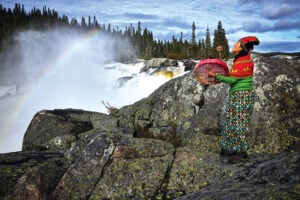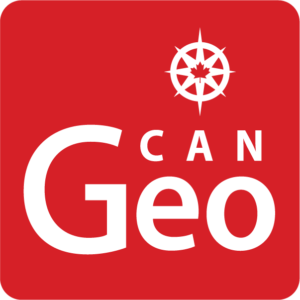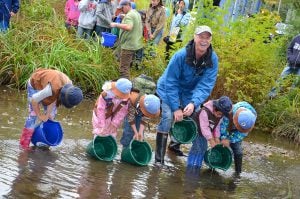Cecil Paul, also known by his Xenaksiala name, Wa’xaid, was born in the Kitlope and is one of the last speakers of the language of his people. He survived being placed in a residential school, struggled with substance abuse and eventually returned home to heal. During this time, he also has fought to protect the Kitlope, which is described as the largest intact temperate rainforest watershed in the world. Following the Good River by Briony Penn is a biography of Paul’s life as one North American’s more prominent Indigenous leaders.
Below is an excerpt:
The Place of My Birth: “They call it the Kitlope”
My name is Wa’xaid, given to me by my people. Wa is “the river”; Xaid is “good” – good river. Sometimes the river is not good. I am a Xenaksiala; I am from the Killer Whale Clan. I would like to walk with you in Xenaksiala lands. Where I will take you is the place of my birth. They call it the Kitlope. It is called Xesdu’wäx w (Huchsduwachsdu) for the “blue, milky, glacial water.” Our destination is what I would like to talk about, and a boat – I call it my magic canoe. It is a magical canoe because there is room for everyone who wants to come into it to paddle together. The currents against it are very strong, but I believe we can reach that destination, and this is the reason for our survival.
When you leave Kitamaat, this is Haisla Land, you go out to – they call it – Gardner Canal. You go into Gardner, and Crab River is where our boundary line was before the amalgamation of the Xenaksiala and the Haisla. Haisla and Xenaksiala share the same language, with a few word differences. Our language is close to the language family of River’s Inlet 1 You can get the Haisla history from Gordon Robinson. When I bring the boat into Xenaksiala land, the tide will bring us through. There is a story for that. From Crab River we enter the Kitlope Valley. The Kitlope has many, many rooms, many doors – there is a lot of history going up to Kitlope Lake. Kitlope Lake, if we manage to journey that far, it is what I call the cathedral – a spiritual place. It is quiet. I think if you experience something when we get there, our people say that you will not leave that place unchanged. You cannot leave the way that you went in. Something touched you. Something grabbed within you that you never identified as yours, but something in there revealed a little of who we are.
When we get to the Kitlope, I am going to ask you to wash your eyes. Our story says that though you may have 20/20 vision or glasses that improve your vision, we are still blind to lots of things. We are blind to Mother Earth. When you bathe your eyes in the artery of Mother Earth that is so pure, it will improve your vision to see things. I will also ask you to wash your ears, so you could hear what goes on around you. So, I could hear you talk. I could hear the wind, and you can hear the birds and animals. If you have the patience to listen, to hear the songs of the birds early in the morning, all these things will be open to you.
We are so busy, we don’t have the time for all these beautiful things. If you have the willingness and courage to do that, you will see little things that you have never seen before. You will take a better look at your children, your grandchildren, your best friend. You’ll say, “Oh, I never saw that before.” To get that vision back – and when you get that back – you will be more kind to whoever comes in your path on this journey. There are many legends that we talk about to our children, and above all, the people around the universe that came with their love and compassion to save something that is known around the world – the largest unlogged temperate rainforest in the world.
Briony Penn
A few weeks after the proclamation of the colony of British Columbia, on August 2, 1858, a map was released from a printing house near Bloomsbury, London, defining the boundaries of the British Empire’s latest claim on global resources. Along the convoluted western coastal boundary, shaded in the rose red of empire, were drawn a dozen of the large fjords mapped, thanks to the cartographic brilliance of Captain George Vancouver. The largest and longest of these was Gardner Canal, a 320-kilometre inlet splitting off of Douglas Channel, giving the appearance of a crooked pointing finger to her majesty’s anticipated riches penetrating deep into what would become British Columbia. The blank portions of the map allude to the polite fiction of terra nullis. Terra nullis is a doctrine of international law that Europeans used to assert sovereignty over lands. It means literally “empty land” and declares that no one owned the land before European claims. (It wasn’t until June 26, 2014, that the Supreme Court of Canada finally recognized the existence of Aboriginal title – not just rights but title.) Riding along the upper part of the digit was the name Gardner, an easily read label given the length and horizontal orientation of that reach of the inlet, before its lazy southeastward turn to the heart of the colony.
Joseph Whidbey, who accompanied Vancouver on the HMS Discovery, explored the canal in one of the ship’s smaller boats. Vancouver describes BC’s longest inlet as “almost an entirely barren waste nearly destitute of wood and verdure and presenting to the eye one rude mass of almost naked rocks, rising into rugged mountains.” He names it after his former commander, Baron Alan Gardner, as a tribute, or not, given his lackluster review of the “canal.” Besides “Gardner” being an absentee namesake, “canal” was also a curious word to describe the largest fjord in the world. The sides of the canal are sheer granite rising 1829 metres from the sea bottom, piled there by shifting tectonic plates, far removed from the more familiar colonial canal being dug by indentured Panamanian slaves into their own mud.
As Wa’xaid explains, the Xenaksiala and Haisla who have occupied and owned this land for millennia have always had their own maps – visual ones. The system of land ownership of their huge territory falls into logical units of mountain watersheds or wa’wais that need no survey instruments, just a fine eye for topography. Boundaries follow the tops of mountains around the different drainage basins of the rivers that flow into the Gardner. Every watershed has a name that corresponds to its steward. The owners have both control and responsibility handed down through their mother’s lineage. Each owner is bound by the nuyem, a code of stewardship that has detailed prescriptions for how the land, waters and wildlife are to be harvested, shared and respected. A bagwaiyas is a special place of abundance that is open to any Xenaksiala/Haisla person to harvest without special permission.
On the colonial map of British Columbia, there was no indication of the 54 wa’waises that occupy “the pointed finger.” Of the 14 wa’waises that pour into Gardner, the first is Crab River, which demarcates the beginning of the territory of the Xenaksiala people and the end of the Haisla wa’waises. Halfway along Gardner is the Kemano River, which is the wa’wais owned by Cecil Paul himself. It was also the official “reserve” of the Kitlope Band until 1948. At the tip of the finger on the colonial map is a river called Kitlope, where Cecil was born in 1931 and mostly hidden until 1941, when, as he explains, the Indian agent rounded him up for residential school. That river flows into a lake, oval and luminescent with its milky-blue glacial water. Ice-caped mountains tower above this lake and for that reason the Xenaksiala call it Ka-ous. The closest Cecil can come to translating that word into English is “cathedral”; it gives people a sense of the beauty, peace and awe you feel when you first enter the lake from the river.
Victoria, April 30, 1992
Friends of Ecological Reserves sponsored a talk called “Kitlope: Portrait of a Temperate Rainforest,” with two speakers from the Kitlope, Cecil Paul and James Robertson, and the photographer Adrian Forsyth, from Conservation International, who was on the reconnaissance trip last year in the Kitlope with them. I left my son Callum with his first babysitter and it was strange to be without him. The two Kitlope men opened the evening in their language thanking the Songhees for welcoming them, which stopped everyone in their tracks. Victoria sure has changed; when I left a decade ago, “God Save the Queen” was what opened events. Cecil Paul spoke so poetically about the Kitlope River as the artery of Mother Earth welcoming everyone to come and leave their footprints in the sand. The photographs were stunning, especially of Kitlope Lake or Kous, which means “cathedral” in Henaksiala. I had to leave halfway through the talk because I just sensed something was wrong at home. Good thing I left. The babysitter had tripped with Callum in the backpack and scraped himself up and they were both crying inconsolably when I arrived.
When I came to know Cecil better, I told him the story about how I never saw the end of his talk. It was almost inevitable that my first lesson from Cecil was about the practical necessities of caring for a child. He had been robbed of most opportunities to be a child or parented. My son’s descent to the earth was the first of many synchronistic events, which Cecil’s presence triggers in spades with anyone who spends time with him.
From Following the Good River: The Life and Times of Wa’xaid by Briony Penn, with Cecil Paul. Published by Rocky Mountain Books, 2020.





